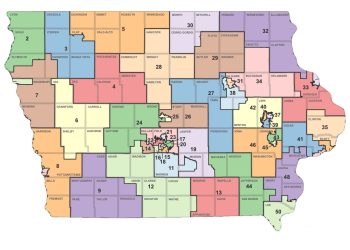DES MOINES, Iowa – On Tuesday afternoon, Gov. Kim Reynolds signed SF 269, a PreK-12 education appropriations bill, into law.
The Iowa Senate passed the bill by a 31-18 vote on Wednesday. House Republicans passed it last week by a 56-36 vote.
“I am proud to once again sign legislation into law that supports our strong public education system in the state of Iowa. Our children are our greatest asset and we have to do everything we can to set them up for success. Our record of increasing school funding year-over-year shows our commitment to Iowa’s public schools,” Reynolds said in a released statement.
The bill set the growth rate for state supplemental aid at 2.4 percent. This increase represents an additional $155 per student, increasing the state’s cost per student to $7,227 in state supplemental aid. The growth rate for state categorical aid is also 2.4 percent. It increases the FY 2022 regular program state cost per pupil by an additional $10 per student, separate from the state supplemental state aid.
SF 269 also additional property tax replacement funding based on the per pupil increase that results from the establishment of the state percent of growth in FY 2022.
In their fiscal note, the Legislative Services Agency (LSA) said that the bill would cause a decrease of $7.4 million (8.38 percent) in preschool formula funding compared to FY 2021 due to enrollment.
LSA also said the bill reduces state aid funding to Iowa’s Area Educational Agencies by $7.5 million. The state’s property tax replacement payment (PTRP), based on a law passed in 2013, included creating the PTRP provision to replace local property tax amounts with state aid. It requires the additional levy portion of the FY 2022 state cost per pupil amount to be frozen at $750 per pupil, regardless of the per pupil increase for FY 2022. The bill includes $86.6 million in PTRP funding, an increase of $11.6 million (15.40 percent) compared to FY 2021.
According to LSA, The total property tax funds generated through the school aid formula are estimated to be $1.66 billion, an increase of $47.1 million (2.92 percent) compared to FY 2021.
In total, state aid from the general fund will be just shy of $3.42 million, a $36.5 million increase from FY 2021.
















